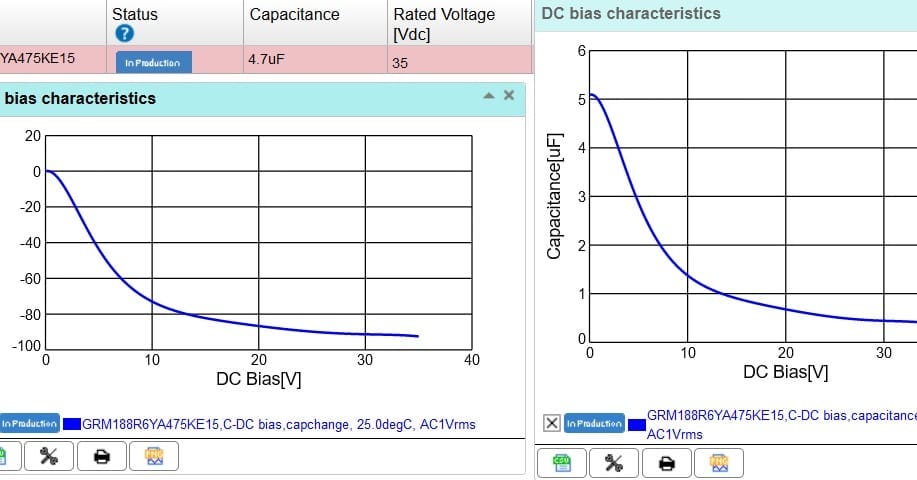MLCC(Multi-Layer Ceramic Capacitor) which most of you are using in your circuits(The usual SMD type) are divided into Class 1(Dielectric: Titanium Oxide) and Class 2(Dielectric: barium titanate). These Class 2 capacitors have problems that most of you never would consider. The capacitance value drops very drastically with the applied DC bias voltage to it.

Take a look at the graph of a standard Murata capacitor(Nominal Value: 4.7μF rated for 35V). Now as the DC voltage applied to the capacitor is increased, you can clearly see that capacitance drops close to 0.5μF when it’s near its rated voltage. This will be a major issue if you are using this capacitor in circuits where capacitance value is critical like for timing or filtering. The effective capacitance will totally screw up your results when you move from the paper design to the physical board. So please consider this when you design next time. For critical applications, try to use Class 1 capacitance which is much more stable. Class 2 caps show this behaviour because of the Barium titanate dielectric used to make them.
One way to counter this problem is to use capacitors that have a rated voltage much more than what is needed for critical applications or by having the same capacitances in parallel to increase the effective capacitance to the nominal ones you design for. For MLCCs used in critical parts of your circuit always, ALWAYS, buy from reputed capacitor brands where these graphs are provided and not from knock-off unbranded ones. Else it will come back to haunt you later on and you wouldn’t even know this part is the culprit. Capacitor Package Size and its values also have an effect on the amount of value degradation. So please refer to datasheets thoroughly before selecting.
PS: Capacitors and things associated with it is a big rabbit hole in themselves. It would itself need an entire series of posts. I can definitely consider this for the future if there is enough interest in these basic topics.
